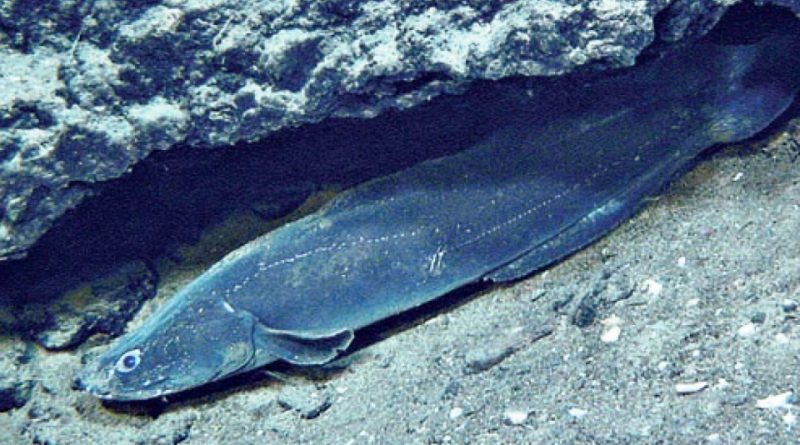Cataetyx laticeps
Cataetyx laticeps
The Atlantic Brotula (Cataetyx laticeps Koefoed, 1927) is a fish belonging to the Bythitidae family.
Systematics –
From a systematic point of view it belongs to:
Eukaryota domain,
Kingdom Animalia,
Phylum Chordata,
Class Actinopterygii,
Order Ophidiiformes,
Family Bythitidae,
Genus Cataetyx,
C. laticeps species.
The terms are synonyms:
– Cataetyx memorabilis Meyer-Rochow, 1970;
– Cataetyx memoriabilis Meyer-Rochow, 1970.
Geographic Distribution and Habitat –
Cataetyx laticeps is a rare fish found along the eastern coast of the Atlantic Ocean, from the British Isles in the north to the Cape of Good Hope in the south, as well as in the western half of the Mediterranean Sea. Its presence has also recently been described in the Gulf of Mexico.
In Italy it has been reported west of Sardinia, but other reports suggest that it is present throughout the Mediterranean.
Its marine habitat is benthopelagic or bathidemersal and lives at depths of 500–2,400 m.
Description –
Cataetyx laticeps is a dark brown fish, with grayish hues, which has a slender body, with a strongly depressed head and flattened snout (wider than long). It has a known maximum length of 65 cm but on average 30-40 cm.
This fish is covered by scales, also on the preoperculum, operculum and head, where they become small and numerous; on the lateral line there are 145. Larger scales are found near the branchial isthmus.
Near the upper corner of the operculum is a strong, pointed spine. The eyes are small and oval, placed dorsally and directed upwards.
It has a large, horizontally cut mouth with the lower jaw ending in a blunt bump; the margin of the upper jaw ends well beyond the eye.
There are granular teeth on the lower and upper jaws and in the latter there are some sharp teeth. Other teeth are found on the vomer and palatine. In the first gill arch there are 3 gill spines.
The dorsal fin (made up of 91-108 soft rays) is inserted at one third of the length of the body and reaches, with a height which sees its maximum in the middle, the caudal fin, in which also the anal flows. This has 74-87 soft rays, begins immediately after the anal opening (located almost halfway through the body) and has a pattern similar to the dorsal one.
The ventral fins are formed by a single short ray. The pectoral fins (22-29 soft rays) are developed, but not large.
It has 60-61 vertebrae.
Biology –
Cataetyx laticeps is a fish of which little is known about its reproduction, however it is viviparous and is an obligate lecithotrophic carrier, i.e. of larvae which nourish at the expense of the vitelline reserves. The lecithotrophic larvae derive from relatively large eggs, have a short life and quickly undergo metamorphosis.
The male reproductive organ is implanted on a large fleshy base.
Ecological role –
Cataetyx laticeps, as mentioned, is a benthopelagic or bathidemersal species, which normally lives on depths around 1000 m, but can go up to 500 m or even descend beyond 2400 m.
Of this fish, also due to the depth in which it lives, little is known about its feeding.
Furthermore, it has no commercial interest.
Regarding its ecological status, according to the IUCN, the species is classified as Least Concern (LC) due to its wide distribution and because there is no evidence of decline or specific threats.
Guido Bissanti
Sources
– Wikipedia, the free encyclopedia.
– GBIF, the Global Biodiversity Information Facility.
– Louisy P., 2016. Guide to the identification of marine fish of Europe and the Mediterranean. Il Castello Editore, Milan.
– Nikiforos G., 2008. Fauna of the Mediterranean. Giunti Editore, Florence.
Photo source:
– https://www.zobodat.at/pdf/DENISIA_0018_0489-0511.pdf


